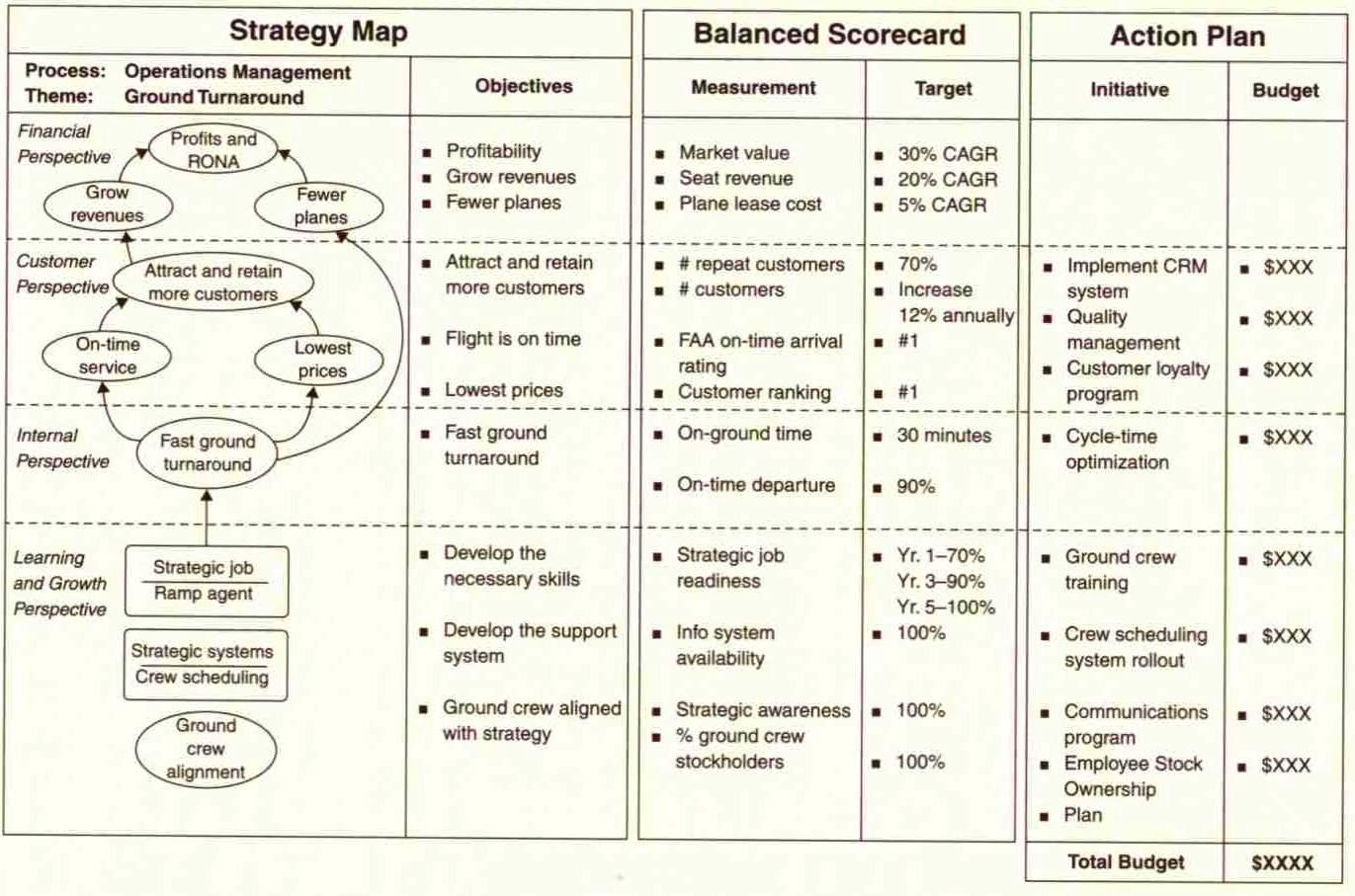 For 10 years, Jill struggled to make a profit. At over $8 million in sales, her specialty call center should have been providing her with annual profits of 8-12% or between $640,000 and a million dollars. Instead she paid herself a “good-enough” salary and saw profits trickle in at 1/2% — just $50,000. She didn’t own a business, she owned a job. Jill had done strategic planning of the “blue sky” variety many times. That kind of planning is worthless, says leadership expert Tom Cox.
For 10 years, Jill struggled to make a profit. At over $8 million in sales, her specialty call center should have been providing her with annual profits of 8-12% or between $640,000 and a million dollars. Instead she paid herself a “good-enough” salary and saw profits trickle in at 1/2% — just $50,000. She didn’t own a business, she owned a job. Jill had done strategic planning of the “blue sky” variety many times. That kind of planning is worthless, says leadership expert Tom Cox.
BY TOM COX
 For 10 years, Jill struggled to make a profit. At over $8 million in sales, her specialty call center should have been providing her with annual profits of 8-12% or between $640,000 and a million dollars. Instead she paid herself a “good-enough” salary and saw profits trickle in at 1/2% — just $50,000. She didn’t own a business, she owned a job.
For 10 years, Jill struggled to make a profit. At over $8 million in sales, her specialty call center should have been providing her with annual profits of 8-12% or between $640,000 and a million dollars. Instead she paid herself a “good-enough” salary and saw profits trickle in at 1/2% — just $50,000. She didn’t own a business, she owned a job.
Jill had done strategic planning of the “blue sky” variety many times. It’s worthless. Maybe you’ve seen this too:
January: make an ambitious goal for the end of the year and call it a “strategic plan” (hint: a goal is not a plan)
March: forget all about the strategic plan; spend your time fighting fires
December: remember the goal, notice you haven’t reached it, and vow to “try harder” next time
Lather, rinse, repeat.
A Better Way
It doesn’t have to go that way. Jill got executive coaching, and a year later her profits were running at 8%. The following year, 8% again. This year, 10%. No, she’s not working her front line staff longer hours, and she didn’t cut benefits. Instead, Jill used sound strategy, and truly executed it.
As part of her coaching, Jill had to create a Balanced Scorecard to execute her strategy. Here’s how she proceeded — and how you can too.
Your four steps should be:
1. Build a Strategy Map that shows the flow of your strategy
2. Build a Balanced Scorecard that implements the strategy
3. Elaborate the Balanced Scorecard into action plans with deadlines
4. Recruit an Advisory Board to help execute the strategy
What Good Strategy Should Look Like
A really good strategic plan will have these features:
* Easy for each employee to understand the whole thing
* Easy for each employee to see their role in the plan
* Easy to tell if the plan is on track or late
So, after devising your strategic plan, create a Strategy Map and a Balanced Scorecard for explaining and executing it.
With the Strategy Map, your people can all see their role in carrying out the big picture strategy. With the Balanced Scorecard, you’ll all be able to tell within a few weeks if any part of the plan is running late.
Rapidly Know if Your Plan is On Track
No plan unfolds exactly as expected — this is why we have managers. Whether you’re the owner or a line manager, it’s your role to quickly gather the info on whether the plan is on track, and if it’s not, adjust accordingly.
The faster you can complete that cycle, of Observing performance, Orienting (making sense of) the data, Deciding what to do, and Acting on it (the OODA loop), the quicker you get back on track, and the happier your workers, peers, and boss are.
Jill needed to re-balance the labor schedule to match customer demand. She had great metrics — call centers usually do. She could see the under-staffed shift that was burning people out, and the over-staffed shift that was boring people — and hemorrhaging cash.
Here’s how part of her Balanced Scorecard looked (read from the bottom up)
| BalSC Level | Target | Measured Via | Action Steps |
| Outcomes | More Profit | Quarterly operating profit (Quickbooks) | Measure as usual |
| External Operations | Enough Labor to Cover the Calls; customer satisfaction | Time on hold; abandoned calls; customer survey results; repeat business | Track weekly and post a graph; discuss in C suite weekly |
| Internal Operations | Not too much Labor; flexible scheduling; less burnout; quarterly meeting with new Advisory Board | Staff utilization; overtime; staff survey results; staff retention; manager competence at using new scheduling system | Conduct staff survey; measure utilization and overtime and post a graph; study survey results; track retention; track correct usage of system by managers |
| Learning, Growth, Alignment | Labor scheduling system; staff acceptance; Advisory Board recruited | System can predict call volume; staff survey of attitudes re new scheduling system; managers trained on new system | Pre-announcement staff survey to uncover concerns; Kick off meeting to explain new system and address concerns; followup survey 90 days later; training developed |
The foolish owner tries to chase outcomes, such as profit, directly. It doesn’t work. It’s incredibly ineffective and often destructive, as many (including HBR’s Peter Bregman, here) have described — middle managers feel pressure to come up with better numbers and, say, pressure staff to work overtime “off the clock” (which is illegal — and causes the best people to quit); or they understaff shifts (which hurts service levels, irritates customers and causes them to leave); or they stop investing in ‘frills’ like training (which prevents employees from growing, and again the best ones leave).
Once we acknowledge that sustainable outcomes can only come from new approaches or a return to basics, then we can stop focusing on results and start focusing on the core daily and weekly disciplines that produce results.
You don’t win a footrace merely by trying really hard the day of the race — you win the footrace during the months or years of training beforehand, and by showing up more prepared, more fit, more ready to win than your competitor.
How the Balanced Scorecard Helps
The key to the Balanced Scorecard is balance — it’s the structure. It draws the eye to the leading indicators, not the lagging indicators.
Profits don’t show up for months. Jill’s scorecard, above, gives her visibility into the actions that need to be done this week, and next week, to make the strategy actually happen.
If the first survey is scheduled to go out by Friday, Jill will know by Friday if the plan is on track. In fact, everybody will know. That visibility helps peers hold each other accountable, and lowers the burden on the owner.
Consider the famous example of Southwest Airlines, which is used in most courses about Balanced Scorecards and Strategy Maps.

This Strategy Map appears as Figure 2-10 in the book Strategy Maps by Kaplan and Norton.
The map proper, on the left side of the image, shows the cause-and-effect relationships between employee engagement and training (the root), up through internal operations, then customer-facing operations, to financial outcomes (the fruit).
In the center is the Balanced Scorecard, showing how the objectives are defined and measured, and what their targets are. Finally on the far right is the Action Plan section, showing Initiatives and Budgets.
Each Initiative might have its own Project Plan for how it is to be put into effect. (No, a Balanced Scorecard is not just a glorified Project.)
Role of the Advisory Board
For small privately owned companies, there’s a lot of strategic benefit to having a good Advisory Board. (More on that next week.) Where a public company has a Board of Directors that should be loaded with knowledge, experience and skill — and empowered to ask tough questions and prevent the CEO from becoming self-deluded or complacent — and where even privately owned portfolio companies have professional owners who can provide similar oversight and value — the privately owned or family owned company usually has nothing of the sort.
But it could.
However, you should have your multi-year strategy defined before you build your Advisory Board.
Board members should be recruited for expertise that can help carry out the strategy. If your strategy is to sell your intellectual property, pay off the investors and close the doors, you’ll want one group of advisors with skills in IP sale, wind-downs, and so on. If your strategy is growing through acquisitions, you’ll want at least one or two M&A experts. And if your strategy is based on creating new partnerships in a related industry, you’ll want advisors with experience and connections in that target industry. Change the strategy, and you may need to change the Advisory Board.
For more information on making your strategy operational, or resources for building your own Balanced Scorecard, click here.
Tom Cox is a Beaverton consultant, author and speaker. He coaches CEOs on how to boost performance by building workplace trust. Email comments to [email protected].


